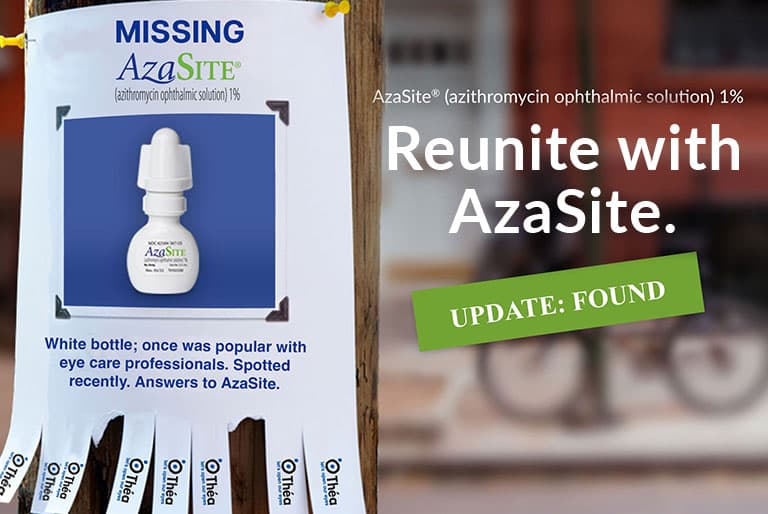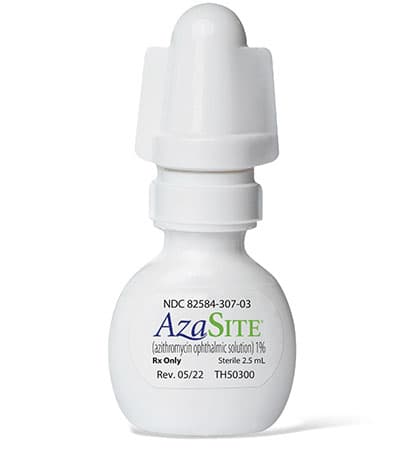INDICATIONS AND USAGE
AzaSite® is indicated for the treatment of bacterial conjunctivitis caused by susceptible isolates of the following microorganisms: CDC coryneform group G*, Haemophilus influenzae, Staphylococcus aureus, Streptococcus mitis group, and Streptococcus pneumoniae.
*Efficacy for this organism was studied in fewer than 10 infections.
IMPORTANT SAFETY INFORMATION
Contraindication: Hypersensitivity to any component of this product.
Warnings and Precautions:
Topical Ophthalmic Use Only - NOT FOR INJECTION. AzaSite is indicated for topical ophthalmic use only, and should not be administered systemically, injected subconjunctivally, or introduced directly into the anterior chamber of the eye.
Anaphylaxis and Hypersensitivity with Systemic Use of Azithromycin. In patients receiving systemically administered azithromycin, serious allergic reactions, including angioedema, anaphylaxis, and dermatologic reactions including Stevens-Johnson syndrome and toxic epidermal necrolysis have been reported rarely in patients on azithromycin therapy. Although rare, fatalities have been reported. The potential for anaphylaxis or other hypersensitivity reactions should be considered based on known hypersensitivity to azithromycin when administered systemically.
Growth of Resistant Organisms with Prolonged Use. As with other anti-infectives, prolonged use may result in overgrowth of non-susceptible organisms, including fungi. If super-infection occurs, discontinue use and institute alternative therapy. Whenever clinical judgment dictates, the patient should be examined with the aid of magnification, such as slit-lamp biomicroscopy, and where appropriate, fluorescein staining.
Avoidance of Contact Lenses. Patients should be advised not to wear contact lenses if they have signs or symptoms of bacterial conjunctivitis.
ADVERSE REACTIONS: The most common adverse reaction reported in patients was eye irritation (1-2% of patients).
Please see the full Prescribing Information here.
References: 1. AzaSite. Prescribing information. Thea Pharma Inc; 2022. 2. American Society of Health-System Pharmacists. Current drug shortages: Erythromycin ophthalmic ointment. Accessed December 1, 2023. https://www.ashp.org/drugshortages/current-shortages/drug-shortage-detail.aspx?id=850. 3. Food and Drug Administration. Current drug shortages. Accessed December 4, 2023. https://www.accessdata.fda.gov/scripts/drugshortages/dsp_ActiveIngredientDetails.cfm?AI=Erythromycin%20Ointment&st=c. 4. Centers for Disease Control and Prevention. Erythromycin ophthalmic ointment shortage. Accessed December 4, 2023. https://www.cdc.gov/std/treatment/drugnotices/FDA-Statement-Erythromycin-Ophthalmic-Ointment-7-8-2022-Final.pdf.







